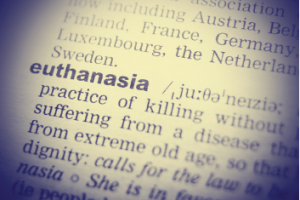The topics of euthanasia, suicide, and physician assisted suicide (PAS) are poorly understood; however, this clarification is increasingly important in our society. Five U.S. states, as well as the country of Canada, have passed laws legalizing PAS and, although a number of state legislatures have previously rejected legalization, the momentum seems to be building for expansion of the number of those that accept it.
Explore This Issue
May 2018PAS has been legal for some time in various European countries, while Great Britain, always the leader in hospice and other palliative concepts, has yet to embrace either PAS or even the concept of euthanasia.
First, let’s classify the topics. Euthanasia is a generic event and suicide a specific one; and importantly, the two are not mutually exclusive. Euthanasia results from actions meant to directly cause death. Passive euthanasia represents the allowance of death by withholding or withdrawing treatment, while active euthanasia results from a deliberate act meant to end life, such as the administration of a lethal potion. It is my belief that suicide, whether assisted or unassisted, can be considered a form of self-imposed euthanasia.
The outline below is a suggested categorization of these topics:
Euthanasia
- Passive
- Active
Suicide
- Self-conceived or self-inflicted (unassisted)
- Assisted
- Active (physician or lay person involvement)
- Passive (physician or lay person involvement)
Self-conceived and self-inflicted suicide is self explanatory. Getting a handle on data is another matter, however, because in certain parts of the world the act is illegal. The World Health Organization estimates that one million self-inflicted deaths occur globally per year. This figure represents approximately 1.5% of all deaths—a number that makes suicide the 10th leading cause of death worldwide. Almost certainly, these figures are gross underestimates. There are more than 31,000 suicides recorded in the U.S. annually.
Assisted Suicide

© Roman Motizov / shutterstock.com
Whether suicide is self-inflicted or assisted, the differences are critical to understanding the interdigitation of this nomenclature. In assisted suicide, there is an active and a passive version. In the latter, the physician is only allowed to supply the information and/or the tools for the patient to induce his or her own death, outside the physician’s presence. In this setting, the person destined to die actually administers the potion.
This is the permitted method in Canada and in the U.S. states that allow PAS. The antithesis of this would be active assisted suicide, in which the physician or even a lay person administers the lethal cocktail. This is the model in the Netherlands and other countries. American physician Jack Kevorkian, MD, tested this limit in 1998, and spent eight years in prison for second-degree murder after he personally euthanized a patient and aired the act on network television.